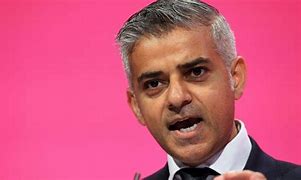World
‘Jihadi John’ denies being extremist on recording

London: A recording has emerged in which Islamic State (IS) militant Mohammed Emwazi, also known as Jihadi John, has denied being an extremist and complained about British security services, a media report said on Tuesday.
Emwazi, who is in his mid-20s and was previously known to British security services, first appeared in a video last August, when he killed US journalist James Foley. He was later thought to have been pictured in the videos of the beheadings of British aid worker David Haines, US journalist Steven Sotloff, British taxi driver-turned-aid worker Alan Henning, American aid worker Abdul-Rahman Kassig, also known as Peter, and Japanese journalist Kenji Goto.
The tape was made in 2009 by advocacy group Cage after Emwazi was deported from Tanzania and questioned by MI5, reported.
In emails and a meeting with Cage, Emwazi said he had arrived in Tanzania for a safari holiday in 2009 but had been refused entry and was put on a flight to Amsterdam, where a British agent accused him of trying to reach Somalia for terrorism training.
Speaking to Cage when he returned to London later that year, Emwazi said: “He (the MI5 officer) looked at me and he said ‘I still believe that you’re going to Somalia to train’.
“He just started, you know, going on trying to put words into my mouth.”
Emwazi said MI5 officers had been “threatening” him and told him: “We’re going to keep a close eye on you Mohammed, we already have been.”
He said the agent, who called himself Nick, also asked him what he thought of 9/11, the war in Afghanistan and the July 7 attacks in London.
Emwazi replied “innocent people” had been killed in the 7/7 attacks and it was “extremism”. He also said that what happened on 9/11 was “wrong”.
“What do you want me to say,” he said he told Nick. “If I had the opportunity for those lives come back then I would make those lives come back.”
Cage’s research director Asim Qureshi, who made the recording on a dictaphone, has been criticised after suggesting that MI5 harassment could have contributed to the radicalisation of Emwazi.
World
Lockdowns in China Force Urban Communities to Defy Censorship and Vent Frustration Online

Shanghai’s rich middle class is leading a wave of online dissent over the strict and prolonged lockdowns imposed in various parts of the country. Chinese internet censorship is struggling as patience is wearing thin in many urban centers, coming up with creative forms of online protests.
Social Media Posts Revealing Lockdown Tension in Shanghai
Drawn-out lockdowns are nothing new in China as authorities insist with the nation’s zero-Covid policy since the start of the pandemic. Currently over This time around, however, metropolitan areas like Shanghai are increasingly difficult to keep quiet, given that its more than 25 million residents have seen weeks of total isolation along with food shortages and many other service interruptions.
Dozens of towns and reportedly over 300 million Chinese citizens have been affected by lockdowns of different severity. As expected, urban netizens have been most outspoken over their difficulties by finding creative ways to get around state censorship and bans placed on topics, news comments and spontaneous campaigns.
Shanghai residents have been using mobile proxies and hijacking seemingly unrelated hashtags to talk about healthcare issues, delivery failures and the overall severity of their situation. The “positive energy” that the Chinese government wants to transmit during the recent prolonged series of lockdowns does not come naturally to those counting food supplies and online censors are working hard to filter words, trending topics and undesired social media sharing.
WeChat groups and message threads are under constant monitoring. Posts questioning the zero-Covid approach have been quickly deleted, including by leading Chinese health experts like Dr. Zhong Nanshan. Video footage is soon censored and protests and investigations are quickly made to disappear.
Where this has not worked, officials have exposed banners with warnings and outright threats like “watch your own mouth or face punishment”, while drones have been patrolling the city skies. Yet, if anything, this has led to further tensions and unspoken confrontation with Shanghai’s educated and affluent middle class.
Creative Online Solutions Harnessing Civic Energy
Announcements by Chinese social media that they would be publishing the IP addresses of users who “spread rumors” have not helped either. Tech industry research has shown that much of Asia’s tech-savvy population has a habit of using mobile proxies and other privacy tools, quickly finding workarounds to browse the internet freely and talk to the world about the hottest topics.
The sheer volume of forbidden posts is already a challenge for the very censorship system, experts explain. Unable to track all trending hashtags, state workers overlook topics that speak about the US, Ukraine or other popular news. Linking human rights elsewhere to their situation, Chinese online dissidents establish their informal channels and “hijack” the conversation to share personal or publicly relevant information about the Covid suppression in their town.
Sarcastic and satirical posts still dominate. Others hope to evade the censors by replacing words from famous poems or the national anthem. One thing is certain – social media, when harnessed with the right creativity, has proven its ability to mount pressure on the government in even some of the most strictly controlled tech environments like China.























